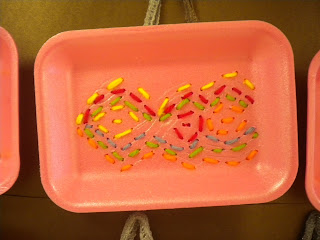5th graders learned about the artist Claes Oldenburg through a
Power Point presentation. Since 1962, Oldenburg has been making soft sculpture
based on common objects ranging from household fixtures (such as toilets, fans,
and light switches) to even food. Students also reviewed the art movement, POP
ART. Pop art can be any every day item, also. Pop Art is short for Popular
Art. It is inspired by comic strips, advertising, and popular
entertainment…things that you would see in everyday life.
When deciding what students should create for their soft
sculptures, I looked to what’s popular in their culture right now- ANGRY BIRDS!
Students first created an Angry Bird drawing, they had a choice of 3 templates
to trace, but were responsible for adding all the details in the face and body.
They outlined in Sharpie, colored in, and cut it out. This would later be used
as a guide for when they were adding details to their soft sculptures.
For their sculptures students used their drawing as a tracer, and
traced it onto two pieces of felt, then cut it out. Students learned how to sew
using two types of stitches in their sculpture- a straight stitch and a whip
stitch. When their sculpture was about ¾ of the way sewn shut, they stuffed it
with cotton batting to make their sculptures fluffy, like Oldenburg’s
sculptures.
Students then cut shapes from felt scraps to create their Angry
Birds face, and used tacky glue to glue pieces to the body. All the student’s
did a phenomenal job on this project! They were engaged the entire time we were
working on this, and I had several students who came in on their own time to
work on it. It was great to see them so inspired and working so hard!
**Lesson idea from Art with Mrs. Nguyen**
http://www.artwithmrsnguyen.com/2012/11/pop-art-plushies-5th.html
Thank you! my students love this project, I've done it several times now.








































